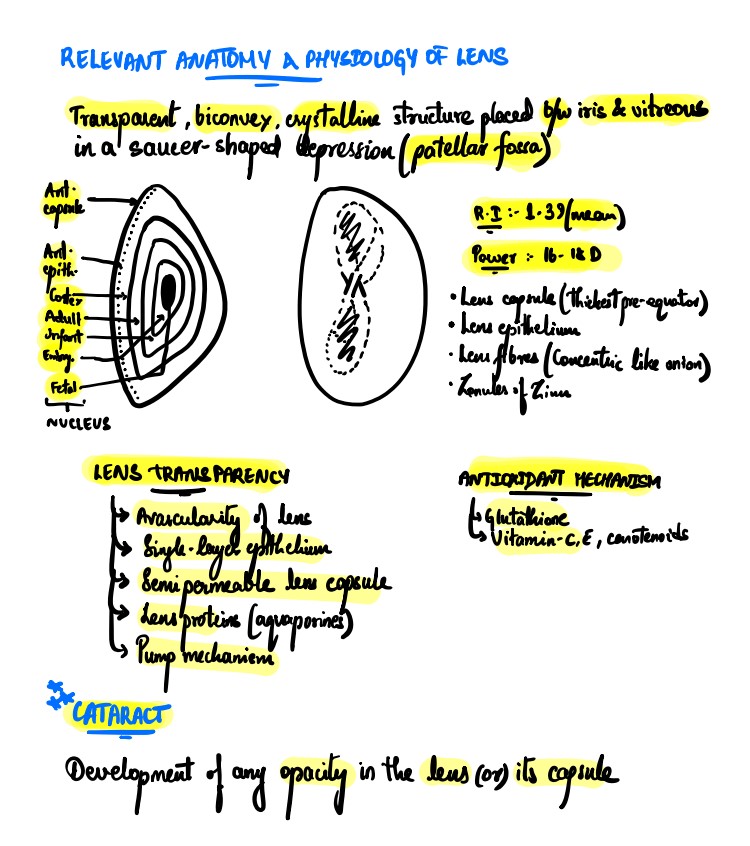Cataract Lens
Summary:
This “Cataract Lens” note attempts to explain the various pathologies involved in the lens of the eyes, which is
normally transparent. In addition, the write-up dwells mainly on cataracts, their pathophysiology and
treatment modalities of the same. I have attempted an easy flow of the topic, starting from basic
anatomy and progressing through the clinical aspects of the lens.
Excerpt:
Cataract Lens
The lens is a transparent structure, which is one of three refractive surfaces of the eye, the other two being the cornea and retina. Usually, the lens is transparent owing to the regularity of the arrangement of lens fibres and relative avascularity, like the cornea. When the transparency of either the lens or lens capsule is affected due to senility or other systemic diseases (like diabetes or even trauma), the condition is known as a cataract. A cataract is further divided anatomically into polar, capsular and subcapsular varieties, presenting with different degrees of diminution of vision.
The main pathogenesis behind cataracts is disturbed lens metabolism, leading to altered electrolyte concentration and accumulation of water (manifesting as water clefts on slit lamp examination), and progresses on to senile immature, mature and hyper mature cataract (when not treated), with an increasing degree of diminution of vision. This diminution of vision is often accompanied by poor colour discrimination and glare, due to varied refractive indices of the various parts of the lens, as a result of the underlying disease process. When the patient is subjected to visual acuity testing, distant vision can range from 6/9 to perception of light (PL) positive (provided the retina has not been involved in any other disease process). Other investigations include a thorough ocular examination to rule out other pathologies like uveitis, conjunctivitis, dacryocystitis, and integrity of the macula (macula function tests)
The treatment of cataracts is surgical and aims to restore the vision of the patient and give a good cosmetic appearance (if vision cannot be restored). Surgery involves the removal of the cataractous lens and the inserting of an intra-ocular lens (IOL) with an appropriate power calculated using biometry.


Reviews